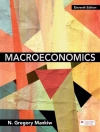A comprehensive introduction to the statistical and econometric methods for analyzing high-frequency financial data
High-frequency trading is an algorithm-based computerized trading practice that allows firms to trade stocks in milliseconds. Over the last fifteen years, the use of statistical and econometric methods for analyzing high-frequency financial data has grown exponentially. This growth has been driven by the increasing availability of such data, the technological advancements that make high-frequency trading strategies possible, and the need of practitioners to analyze these data. This comprehensive book introduces readers to these emerging methods and tools of analysis.
Yacine Aït-Sahalia and Jean Jacod cover the mathematical foundations of stochastic processes, describe the primary characteristics of high-frequency financial data, and present the asymptotic concepts that their analysis relies on. Aït-Sahalia and Jacod also deal with estimation of the volatility portion of the model, including methods that are robust to market microstructure noise, and address estimation and testing questions involving the jump part of the model. As they demonstrate, the practical importance and relevance of jumps in financial data are universally recognized, but only recently have econometric methods become available to rigorously analyze jump processes.
Aït-Sahalia and Jacod approach high-frequency econometrics with a distinct focus on the financial side of matters while maintaining technical rigor, which makes this book invaluable to researchers and practitioners alike.
Circa l’autore
Yacine Aït-Sahalia is the Otto A. Hack 1903 Professor of Finance and Economics and director of the Bendheim Center for Finance at Princeton University. He is the coeditor of the
Handbook of Financial Econometrics.
Jean Jacod is professor at the Institut de Mathématiques de Jussieu in Paris. His books include
Discretization of Processes.












